In This Article
In the 1940s, a group of researchers at the University of Illinois was able to isolate a primary chemical compound in the cannabis plant for the very first time.

The chemical compound that was isolated is known as cannabidiol but, today, we more commonly know this particular compound by its abbreviation, which is CBD.
Although the isolation of this cannabis chemical compound was a breakthrough in natural medicine, the researchers behind the discovery classified the cannabidiol compound as toxic at the time of the discovery as they did not have any significant evidence behind its medicinal properties at the time.
As noted, cannabidiol is one of the primary chemical compounds that make up the cannabis plant. In fact, approximately 40% of cannabis extracts consists of Cannabidiol[1]. In addition to cannabidiol, tetrahydrocannabinol, more commonly known as THC, is another primary chemical compound.
It is the cannabidiol content of the cannabis plant that possesses numerous medicinal properties, which is now used to treat a variety of health concerns and even some of the more common ailments that people complain about.
The History Of Cannabidiol

History Of Cannabidiol
While we have already talked about the first isolation of cannabidiol in the cannabis plant, we should take a deeper look at the history of this particularly famous compound of cannabis.
We mentioned that the chemical compound was first isolated in the 1940s by the University of Illinois, but at the time, cannabidiol was classified as toxic since no accurate data about this chemical was available yet.
After being discovered, there was no particular interest in the cannabidiol compound for at least 20 years. Later on, in 1963, however, the Hebrew University of Jerusalem had some interest in finding out more about what cannabidiol really is, how it works and what it does to the body.
The research was led by Raphael Mechoulam, a chemist that attended the Hebrew University of Jerusalem. Raphael went on to do more research and was able to identify the structure of the cannabidiol chemical compound in the cannabis plant.
Raphael and his team spent approximately one year analyzing and studying the cannabis plant and, specifically, the cannabidiol compound that was isolated by the University of Illinois.
During this time, they were also able to isolate the other major compound in cannabis, THC. The scientists were also able to synthesis both of these compounds by the end of the study period.
While the isolation of cannabidiol brought forward a breakthrough in the research on cannabis, this particular study sparked a lot of interest in this field.
From here, a lot of researchers started to investigate the potential effects that cannabidiol has on the human body. A team of scientists in Brazil started a study to identify the potential benefits of cannabidiol for patients with epilepsy in 1973.
They were able to prove that the chemical compound has the ability to assist with the treatment of convulsions that are caused by epilepsy. The study started out by looking at the effects of cannabidiol in animal subjects.

Epilepsy Cause
One year later, it was discovered that cannabidiol has a similar function to anxiolytic, which can assist with treating the symptoms that epilepsy causes.
After scientists identified the potential benefits cannabidiol has for patients that suffered from epilepsy, further research was conducted to identify other benefits that cannabidiol may have for similar conditions, as well as for other areas of human health.
After the discovery of the endocannabinoid system, research in the area of cannabidiol and its potential health benefits increased significantly.
By the end of the 19th century, researchers had proven that cannabidiol has the ability to act as a cellular antioxidant and that it had several neuro protective functions that are beneficial for the user's brain health.
This also opened up new doors toward potentially using cannabidiol to treat and prevent certain neurological diseases, such as Parkinson's disease and Alzheimer's disease.
At the same time, GW Pharmaceuticals, a company that produced different types of medicine, obtained a license to legally produce medicine that contained both cannabidiol and tetrahydrocannabinol, which was developed to assist with the treatment of spasm, as well as pain, amongst patients who had been diagnosed with Multiple Sclerosis.
Early in the 20th century, researchers discovered that cannabidiol is not only effective for treating neurological conditions and for reducing pain, but is also a powerful substance to use for treating certain kinds of autoimmune diseases.
Research on cannabidiol's effect on autoimmune diseases was commenced due to the already-knowing effects of this particular chemical on the immune system of the human body, as well as its ability to provide anti-inflammatory effects in the body.
The first studies focused on treating the symptoms of rheumatoid arthritis with cannabidiol, but later studies started to focus on more autoimmune diseases and, later on, even other diseases that are not classified as “autoimmune”, such as cancer and cardiovascular disease.
How Are CBD Used Today?

Over the Counter Drugs
After years of research on the cannabidiol compounds found in the cannabis plant, the compounds are now infused into oils and used to treat quite a large number of health concerns. There are many different uses for CBD oil today and the oil is used by millions of people.
Even though many uses for the oil has been discovered, research is also constantly being conducted to identify further potential health effects of CBD oil and to provide more accurate information on the existing information that is available regarding the use and benefits of this oil.
Cannabidiol is most popular for its ability to act as a pain reliever[2], as well as its anti-inflammatory properties.
Since over-the-counter drugs and those that can be purchased with a prescription from a doctor can cause many side-effects, such as an upset stomach and even damage to the liver in some cases, the use of cannabidiol is considered more beneficial due to the lower risk of side-effects when compared to using over-the-counter drugs and prescription drugs for pain and inflammation.
The chemical compound is also used in an oil form to treat a variety of mental illnesses today, with epilepsy, as we have noted earlier, being one of the earliest disorders treated with the compound.
Anxiety disorders are also treated with CBD oil today.
Furthermore, some people use CBD oil to help them overcome smoking and drug addictions - the oil may be of assistance when used to reduce the withdrawal symptoms that may develop when a person stops smoking or stops using recreational drugs.
Many other health concerns are treated with cannabidiol oil today, including type 1 diabetes, acne, Alzheimer's disease and even cancer.
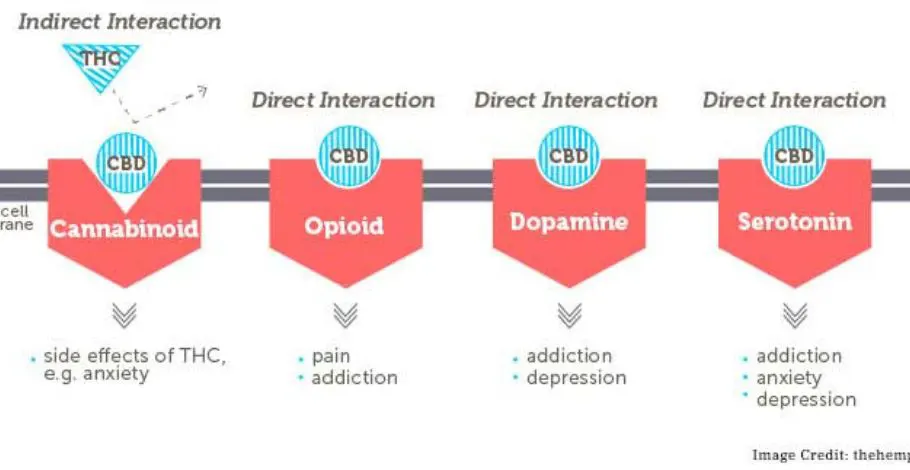
Receptor Systems
What Is Cannabidiol?
Cannabidiol, or CBD as it is more commonly known as, is one of the most abundant chemicals in the cannabis plant. There are more than 80 different chemicals found in the cannabis plant.
The other abundant chemical in the cannabis plant is THC, as we have noted earlier. While THC has psychoactive properties that causes the “high” effect recreational cannabis users are after, cannabidiol does not contain the same psychoactive compounds.
In fact, using cannabidiol will not cause any “high” effect.
Out of the two primary chemicals found in cannabis, being cannabidiol and tetrahydrocannabinol, TCH has been the more popular compound for many years.
With the breakthroughs in research behind cannabidiol, however, the general public are now starting to recognize CBD as well due to the medicinal properties that the chemical compounds offer without the “high” effect of THC.
How Does Cannabidiol Work?
Now that we have taken a quick look at the history of cannabidiol and discussed what this particular chemical compound found in cannabis plants are, let's turn our focus to the working action of cannabidiol.
First of all, as we have already noted, cannabidiol does not contain the psychoactive properties that tetrahydrocannabinol contains, so if you are looking to get a “high” from using this particular product, then you will not be pleased when you use the product as it will not cause any psychoactive effects to develop.
What Is The Endocannabinoid System?
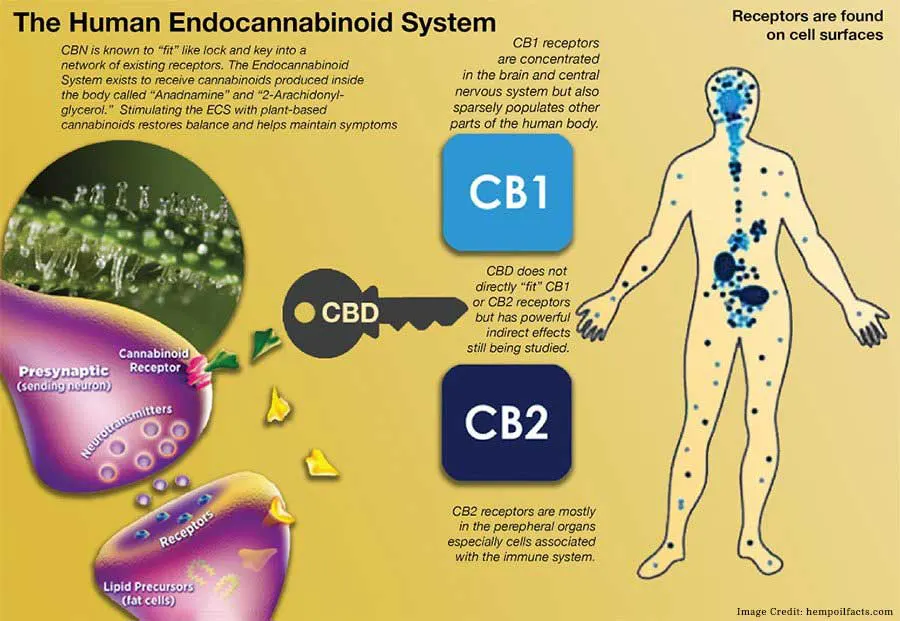
Endocannabinoid System Info
Before we look at how cannabidiol work, we first need to discuss the particular system in the human body that is affected by this chemical compound - the endocannabinoid system[4]. The endocannabinoid system is found in the human body, as well as the bodies of animals.
Dr. Ralph Mechoulam, a researcher in Israel, first identified this system in the human body in the 1990s. The same researcher was behind the discovery of tetrahydrocannabinol in the cannabis plant.
Ralph found that the endocannabinoid system in the human body contained numerous receptors that only reacts toward the presence of cannabinoids. The two particular cannabinoids that the endocannabinoid system reacted to best included cannabidiol and tetrahydrocannabinol.
Further research is currently being conducted to identify specifically how the system reacts to two other particular cannabinoids, including cannabigerol and cannabinol.
The human body naturally produces endocannabinoids, to which the primary receptors of the endocannabinoid system responds to. In addition to the naturally produced endocannabinoids, it was also discovered that the endocannabinoid system and weed responds to phytocannabinoids, which include the ones previously mentioned, which can be obtained from plant sources.
The two particular receptors that the scientists discovered to be most important for reactions to cannabidiol and tetrahydrocannabinol includes:
- Cannabinoid 1, also simply called CB1.
- Cannabinoid 2, also simply called CB2.
News Medical[5] explains that these cannabinoid receptors are mostly found within the central nervous system. Cannabinoid 1 receptors are more abundant than Cannabinoid 2 receptors.
These receptors are found in large numbers within the brain. They inhabit the nerve cells that are found in the spinal cord and the brain. Some of the body's peripheral organs also contain Cannabinoid 1 receptors.
In addition to these, tissues in the body also contains Cannabinoid 1 receptors, such as white blood cells, certain parts of the human body's reproductive system and the spleen.
Scientists have also discovered some Cannabinoid 1 receptors in the urinary tract and the gastrointestinal tract of the human body.
Cannabinoid 2 receptors are not as prevalent in the human body as Cannabinoid 1 receptors, but is still of significant importance. These receptors are found within white blood cells.
There are also some Cannabinoid 2 receptors in the spleen and the tonsils. While Cannabinoid 1 receptors are also found within white blood cells, there is a much larger quantity of Cannabinoid 2 receptors to be found in white blood cells.
These receptors in the immune system plays a crucial part in regulating the release of cytokine.
According to Herb.co, the endocannabinoid system has a vital role to play in many bodily functions. They continue to report that this particular system has an effect on our mood and memory, as well as our motor control.
The system is involved in the endocannabinoid system function of the immune system and the reproductive system, and also plays a part in the perception of pain. Bone development, sleep and appetite are also particular functions in the human body that are affected by the endocannabinoid system.
How Does Endocannabinoid System Work?
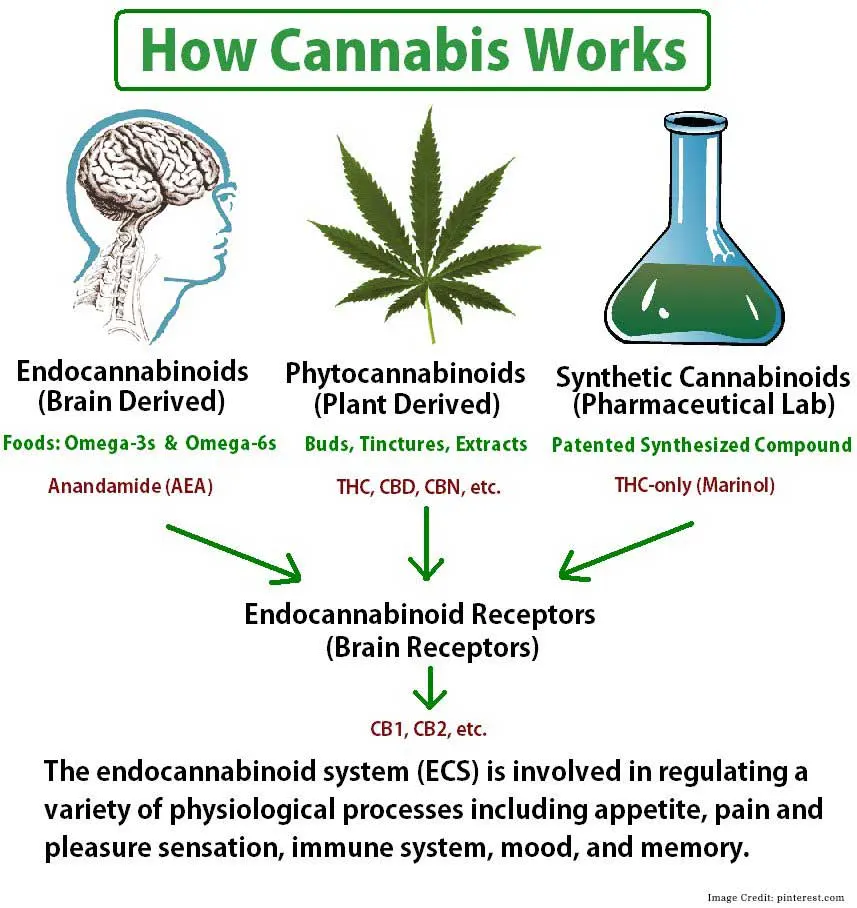
Endocannabinoid System Work
By first understanding the endocannabinoid system in the human body, as well as the primary two receptor types included in this system that reacts toward the intake of cannabidiol and other chemical compounds found in the cannabis plant, it becomes easier to understand how exactly cannabidiol works in the body.
Now that we have discussed the endocannabinoid system, as well as the receptors that form part of this system, let's discuss cannabidiol's action in the human body in more details and what is cannabinoid receptors?.
The very first factor that needs to be mentioned is the fact that cannabidiol does not directly activate or stimulate the two primary receptors, being Cannabinoid 1 and Cannabinoid 2 receptors, in the endocannabinoid system.
Tetrahydrocannabinol, on the other hand, does stimulate these two receptors directly. Instead, cannabidiol works in a different way to produce the various health benefits that it has to offer.
The primary action of cannabidiol in the human body is to activate receptors other than the Cannabinoid 1 and Cannabinoid 2 receptors. In some cases, cannabidiol may even inhibit the activation of the Cannabinoid receptors that form part of the endocannabinoid system.
This may sound strange at first, but let's explore these facts to provide a clearer overview of the actions that cannabidiol has in the body.

Actions of Cannabidiol
“Cannabidiol has the ability to inhibit the activation of the Cannabinoid 1 receptor through the presence of tetrahydrocannabinol.
When tetrahydrocannabinol is present in the body, it usually causes the Cannabinoid 1 receptors to activate and, through this process, causes the “high” feeling that recreational users are after.
When combined with cannabidiol, however, the “high” will be reduced.
This combination is often used when both tetrahydrocannabinol and cannabidiol is used for medicinal purposes in a patient. Note that tetrahydrocannabinol is not needed for the health benefits of cannabidiol to be utilized; thus each can be used separately.
“When cannabidiol is utilized in high doses, then a particular serotonin receptor, known as the 5-HT1A receptor, can be activated. The activation of this particular receptor has been shown to provide several benefits for the user of cannabidiol.
Its ability to act as an anti-depressant is one particularly popular way in which cannabidiol and its activation of the 5-HT1A receptor are useful, but this is not the only benefit that this receptor has when activated through the use of this chemical compound.
According to Elixinol[6], this receptor also contributes toward pain perception, as well as appetite. This is also the receptor that is activated and utilized when a person uses cannabidiol oil to assist with overcoming addictions.
“Cannabidiol has the ability to activate the human body's TRPV-1 receptors. This particular type of receptor is involved in body temperature. It also has an effect on the perception of pain in the body, as well as inflammation.
Thus, by activation of the TRPV-1 receptor, several components related to temperature regulation, pain and inflammation may be improved.
“Cannabidiol can also activate another receptor known as the adenosine receptor, which then causes anti-inflammatory effects to become present in the user.
The activation of adenosine receptors can also cause an anti-anxiety effect; thus assisting with the treatment of anxiety disorders.
It is also important to note that the fact that cannabidiol can activate adenosine receptors mean it may also act upon the production of glutamate and dopamine. These two neurotransmitters are very important for mental health.
For example, dopamine is known to contribute toward cognition, motivation, reward and motor control. Glutamate is known to affect memory, cognition and learning.
How Should Cannabidiol Oil Be Used?
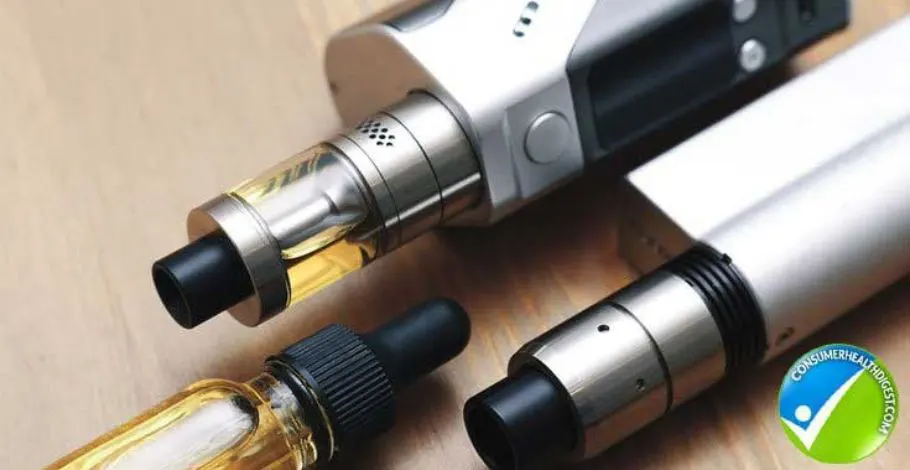
Cannabidiol Oil Used
Using cannabidiol oil can have numerous benefits for the user, but one particularly popular question is “how should the oil be used”?
We know that the cannabis plant is often utilized in a smoking form, but this is often done by the recreational users and not for the particular medicinal properties that the plant has to offer.
Thus, we would like to take a quick look at the most appropriate uses of cannabidiol oil.
According to World of Weed CBD[7], there are different ways in which cannabidiol oil, or CBD oil, can be utilized for its medicinal properties. Each user may have their own particular preferences; thus the most appropriate use often defers from one user to another.
One of the most popular uses includes vaping, which has become quite popular and is now often utilized as an alternative to smoking due to the less harmful effects that this form of inhaling has on the lungs, throat, mouth and other parts of the body.
Vaping utilizes a special device that is often formed in the shape of a cigarette or a pen. The devices are often called vape pens. These devices are battery operated and are not lit with a lighter.
The cannabidiol oil is added to the device. Once added, the device is turned on and it will heat the oil to the right temperature - not too hot and not too cold.
The user then simply sucks on the vape pen and smoke will be released into their mouth. This is often considered the most efficient way of using cannabidiol oil for its numerous medicinal properties.
Vaping certainly is not the preferable option for using cannabidiol oil for everyone. Fortunately, there are other ways to use this oil for its medicinal properties.
Sublingual consumption of cannabidiol is possible and is also a very effective way. By placing a few drops of cannabidiol oil under the tongue, the chemicals are absorbed into the bloodstream and starts acting rather quickly - much faster than some of the other ways in which the oil can be used.
When used sublingually, cannabidiol oil usually starts working within a few minutes when used for pain and inflammation, anxiety and several other medicinal means.
Oral consumption of cannabidiol oil is also possible. This particular method of use works most effectively when the oil is consumed on an empty stomach.
Note that consumption of this oil usually takes at least 60 minutes before the effects can be noticed. This particular method of use may lead to the development of some side-effects associated with the use of cannabidiol oil, such as headaches.
Dysphoria, which refers to a condition where the user may have a general feeling of unease, may also develop as a side-effect.
To counteract the possible side-effects of cannabidiol oil when consumed, many users tend to mix the oil with some water. It is not necessary to mix the oil with water as it can also be mixed with food or other drinks.

Mix Oil with Drink
By mixing the oil with food or a drink, the effects may take somewhat longer to become present, but the risk of experiencing side-effects are significantly reduced.
Conclusion
Even though cannabidiol compounds in cannabis was first thought to be toxic, further research identified numerous health benefits of the plant. Today, we turn towards CBD oil to help us fight against mental disorders, to reduce pain and inflammation, to improve heart health and much more.
Many people use this oil without considering how it works and what it does to the body. In this article, we outlined the basics of how cannabidiol works and what it does to the human body to help potential users better understand what cannabidiol oil can do for them.
Feature Image: Shutterstock.com
In-Post Image: Shutterstock.com, hempoilfacts.com & pinterest.com




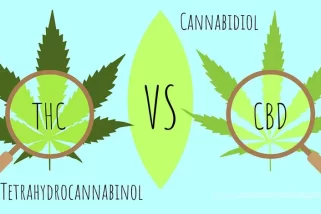


 This article changed my life!
This article changed my life! This article was informative.
This article was informative. I have a medical question.
I have a medical question.
 This article contains incorrect information.
This article contains incorrect information. This article doesn’t have the information I’m looking for.
This article doesn’t have the information I’m looking for.